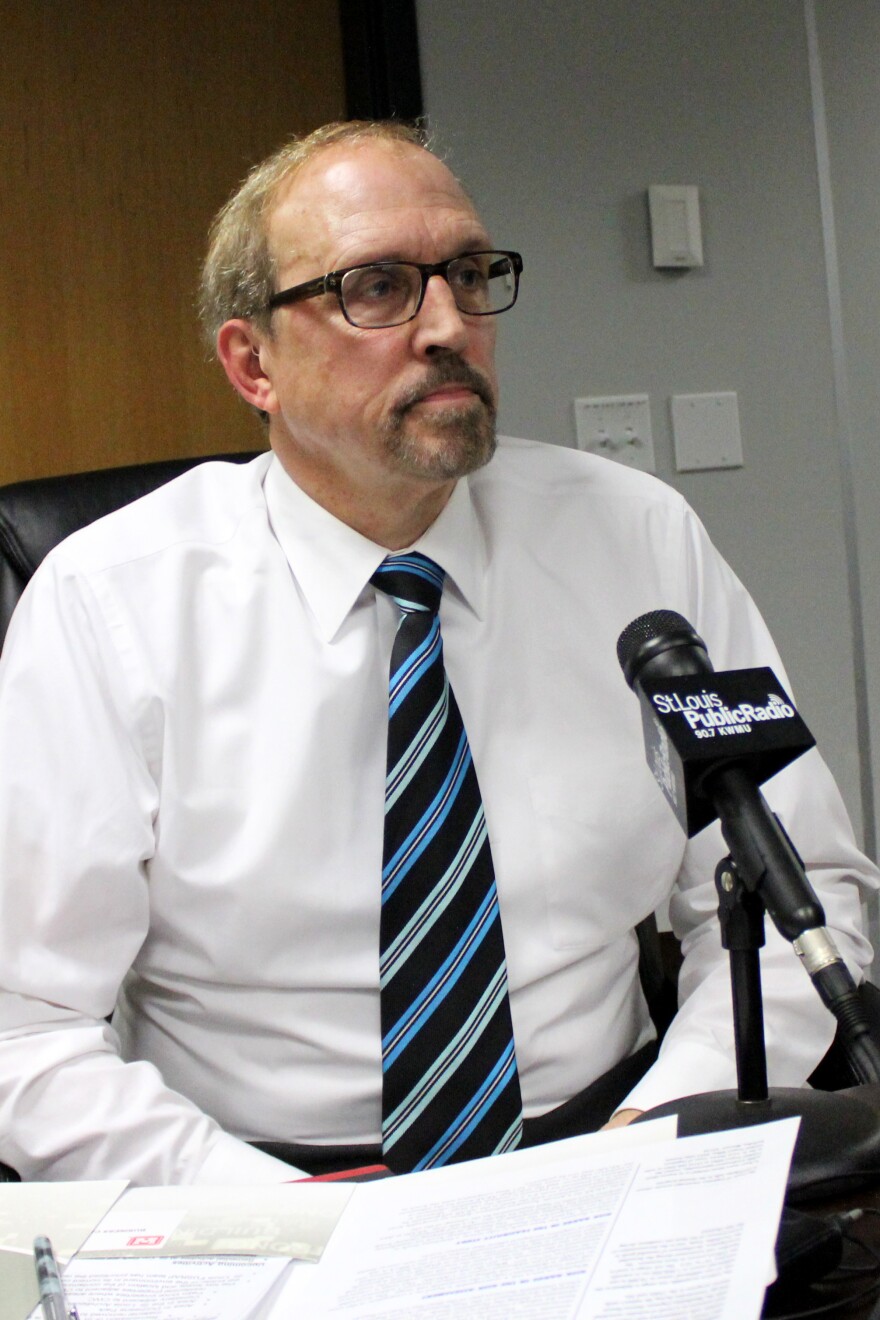The U.S. Army Corps of Engineers has found more radioactive contamination along a north St. Louis County creek.
The latest round of sampling detected radioactive soil at three homes and four businesses near Coldwater Creek. That’s in addition to the contamination found this summer at four homes and the Chez Paree apartment complex near Palm Drive in Hazelwood.
The Corps declined to say where the seven newly-identified properties are located or what kind of businesses are involved, stating it is still verifying that all property owners have been contacted.
Speaking at a press conference on Monday, St. Louis District Corps program manager Bruce Munholand said those seven properties will need more testing to determine whether the contamination there is sufficient to require remediation. The level of thorium 230 that would trigger a clean-up by the Corps is 15 picocuries per gram of subsurface soil. The Corps is also testing for uranium and radium.
But Munholand said the first five properties identified this summer will need to be cleaned up. "We have completed all the investigations, and there is contamination there," Munholand said.
Still, Munholand characterized the contamination at all twelve properties as "low" and said it does not pose an immediate health risk — as long as no one does any digging. "We’re telling [property owners] as a precautionary measure to not disturb the soils and dig them up, which could possibly put someone in touch with the contaminated soils, or suspend stuff in the air.”
According to Munholand, the radioactive soil is from six inches to five feet below the surface.
The Corps is currently removing contaminated soil from St. Cin Park in Hazelwood and plans to complete work there in Feb. 2016. Next, the Corps will begin cleaning up Duchesne Park in Florissant, a process which Munholand said could take two or three months. "So, late summer we ought to be getting into doing the residential areas," Munholand said, referring to the five Palm Drive-area properties in Hazelwood. That residential remediation work will involve relocating utility poles, removing some trees, and building a haul road, in addition to excavating and trucking out the radioactive soil.

Meanwhile, the Corps is continuing to test for more radioactive contamination along the 3.4-mile stretch of Coldwater Creek between Frost Avenue and St. Denis Bridge, where it has already collected more than 7,000 soil samples. Testing from St. Denis Bridge to Old Halls Ferry Road will begin in late 2016.
Typically, Munholand said, the Corps tests soil from the creek's edge out to the limit of the 10-year floodplain. "If we have information from others that flooding has occurred in a wider area, we will sample within that wider area," Munholand said. When asked whether the Corps has done any radiation testing inside homes whose basements are known to flood with creek water, Mulholand said it had not. "Our mission, our goal, and our mandate is the soils, remediating the soils," Muholand said.
Coldwater Creek was contaminated with uranium processing waste from the development of atomic weapons during the 1940s and 50s. People who grew up near the creek have reported cancers, autoimmune disorders and other serious health problems.
The Corps will have more information about its soil sampling and clean-up efforts at a public meeting this Wednesday from 6-8:30 p.m. in the James J. Eagan Community Center in Florissant.
Follow Véronique LaCapra on Twitter: @KWMUScience






